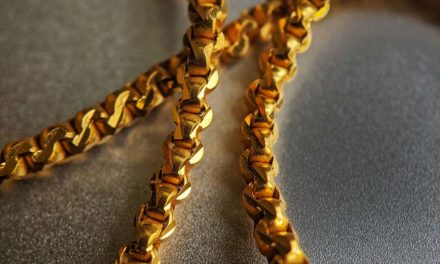Men’s silver jewellery can be a hidden stash of wealth you didn’t know you had. When you have unused silver jewellery and accessories that you no longer wear or use, you can unlock their value and put the money to good use whether you invest it or splurge on something.
Before you sell, you’re probably wondering this: what is your silver jewellery worth second-hand?
What Happens to Silver Jewellery That You Sell
To answer that question, it helps to know what happens to silver jewellery after you sell it. Generally, you can’t expect to get what you paid for it. When you buy jewellery, much of what you pay for is the cost of design and the value of the brand name. When you turn around to sell it, you’re largely selling it for the value of the precious metal content, with the exception of luxury designers and antique or vintage pieces.
Estimating the Value of Your Silver Jewellery
For the most part, broken or unremarkably silver jewellery gets melted down and recycled once the buyer has accumulated enough to sell it to a refiner. Buyers are paying for the bullion. If you want an accurate price estimate, find out the weight and purity of the pieces you’re going to sell.
When your jewellery is evaluated, and you get a quote, make sure pieces with different purities are evaluated separately.
What Types of Jewellery Should You Sell?
Anything with precious metal content is fair game to sell to a bullion dealer. This includes rings, chains, necklaces, bracelets, earrings, cuff links, and more.
If you have anything from a top designer brand, it’s more likely to be resold instead of recycled. Make sure you know who made it and find out what kind of resale market exists for the piece.
However, before you bring in your watch to a bullion dealer, be sure to read below.
Why Your Watch Probably Isn’t Silver
If you’ve been given or inherited a brilliant, silver-colored watch, you might mistake it for being made of the metal it so closely resembles. Silver used to be a common metal in watches, especially pocket watches because gold was too expensive and iron would corrode.
However, silver stopped being used because of how quickly watches would tarnish. Cleaning the tarnish off silver can be a lot of work, and as alternatives became more widely available, silver fell out of use.
Most likely, that “silver” watch is made out of stainless steel. Stainless steel has even surpassed gold as the material of choice for watches in recent years. You may still be able to find a good buyer for it, especially if it’s a designer or vintage watch, but you won’t be able to take it to a bullion dealer.
In some cases, the watch might be made out of either white gold or platinum, in which case you’re probably looking at a much more valuable timepiece than if it were made from stainless steel. Make sure you confirm the material before you go to sell.
Selling men’s silver jewellery can be lucrative. Add extra income and savings by taking your jewellery to a bullion dealer.















